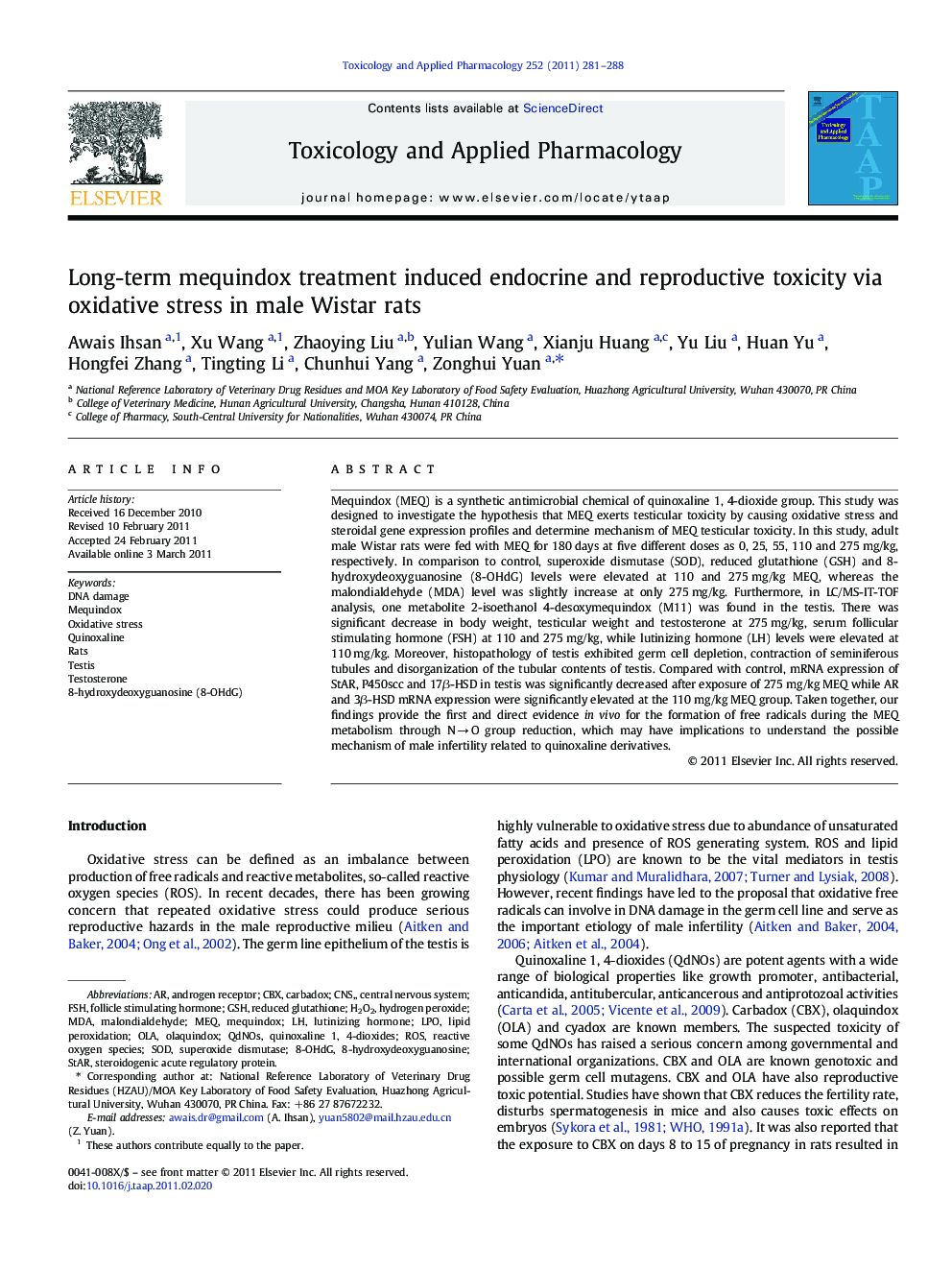| Article ID | Journal | Published Year | Pages | File Type |
|---|---|---|---|---|
| 2569535 | Toxicology and Applied Pharmacology | 2011 | 8 Pages |
Mequindox (MEQ) is a synthetic antimicrobial chemical of quinoxaline 1, 4-dioxide group. This study was designed to investigate the hypothesis that MEQ exerts testicular toxicity by causing oxidative stress and steroidal gene expression profiles and determine mechanism of MEQ testicular toxicity. In this study, adult male Wistar rats were fed with MEQ for 180 days at five different doses as 0, 25, 55, 110 and 275 mg/kg, respectively. In comparison to control, superoxide dismutase (SOD), reduced glutathione (GSH) and 8-hydroxydeoxyguanosine (8-OHdG) levels were elevated at 110 and 275 mg/kg MEQ, whereas the malondialdehyde (MDA) level was slightly increase at only 275 mg/kg. Furthermore, in LC/MS-IT-TOF analysis, one metabolite 2-isoethanol 4-desoxymequindox (M11) was found in the testis. There was significant decrease in body weight, testicular weight and testosterone at 275 mg/kg, serum follicular stimulating hormone (FSH) at 110 and 275 mg/kg, while lutinizing hormone (LH) levels were elevated at 110 mg/kg. Moreover, histopathology of testis exhibited germ cell depletion, contraction of seminiferous tubules and disorganization of the tubular contents of testis. Compared with control, mRNA expression of StAR, P450scc and 17β-HSD in testis was significantly decreased after exposure of 275 mg/kg MEQ while AR and 3β-HSD mRNA expression were significantly elevated at the 110 mg/kg MEQ group. Taken together, our findings provide the first and direct evidence in vivo for the formation of free radicals during the MEQ metabolism through N → O group reduction, which may have implications to understand the possible mechanism of male infertility related to quinoxaline derivatives.
